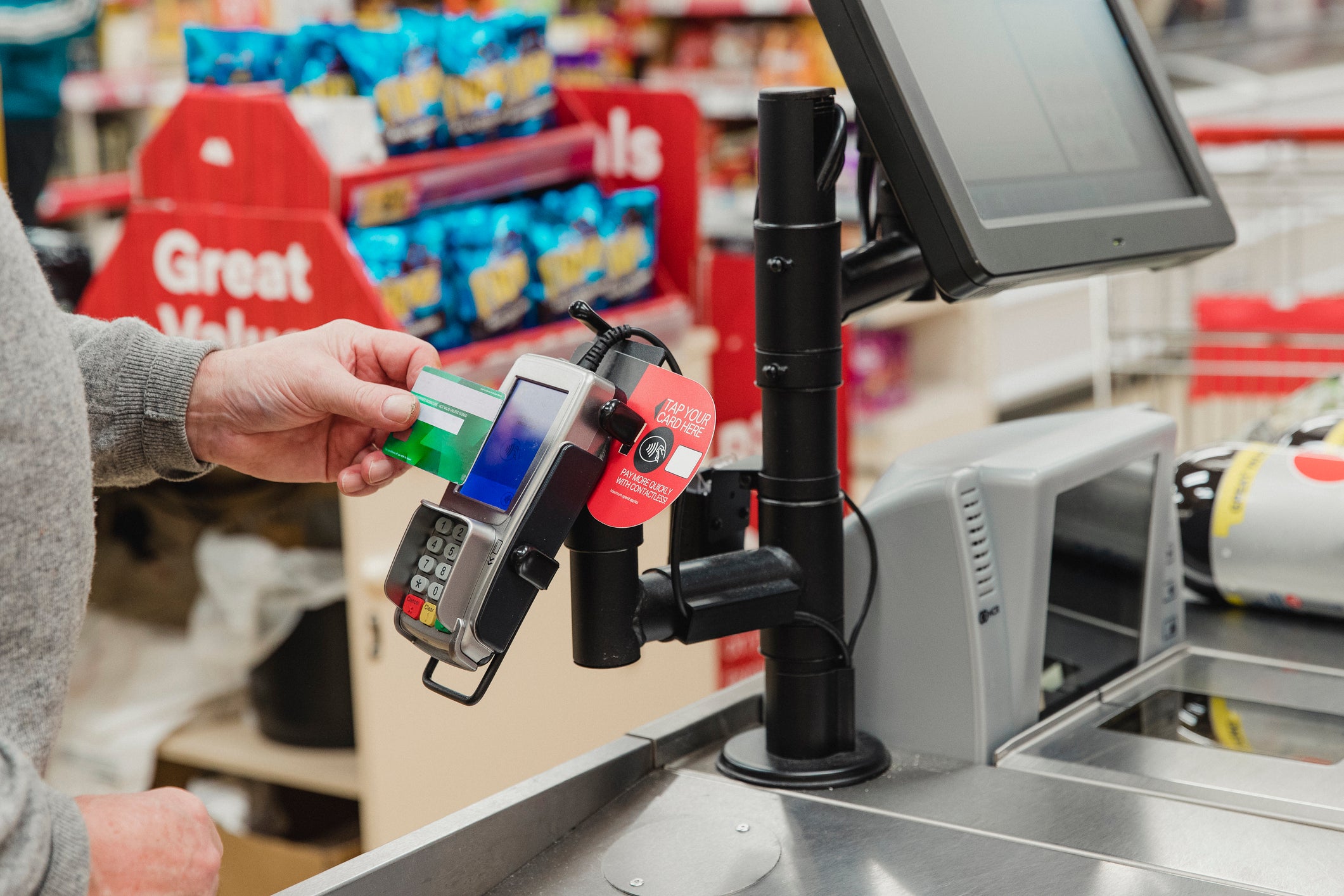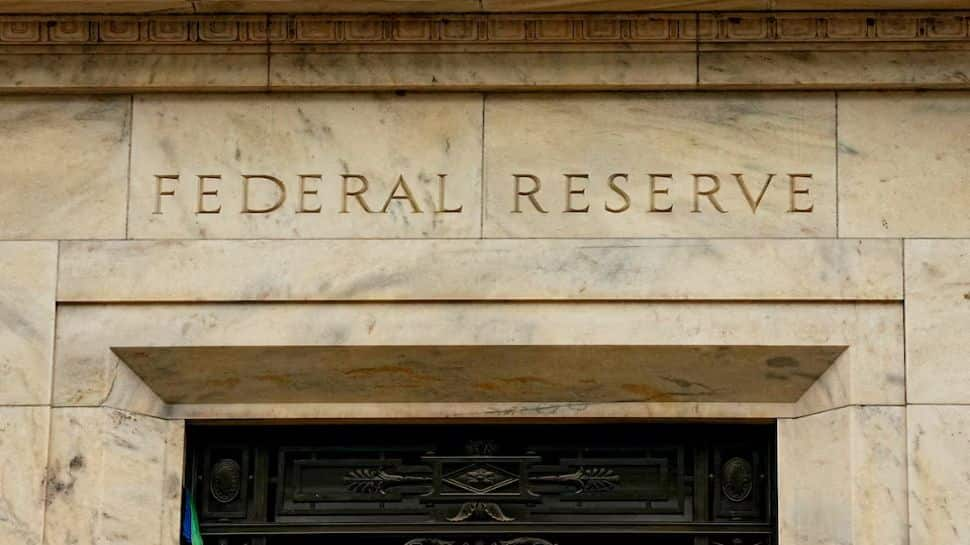Business
US Fed meeting begins: Trump aide Stephen Miran sworn in as governor, Jerome Powell under pressure as rate cut expected – The Times of India

The US Federal Reserve opened a key interest rate meeting on Tuesday, just hours after Donald Trump’s close aide Stephen Miran was sworn in as a governor of the central bank, while another top official, Lisa Cook, is fighting the president’s attempt to oust her.Miran, who has been a senior adviser to Trump, took the oath of office on Tuesday, the Fed said in a statement, as its rate-setting Federal Open Market Committee (FOMC) began a two-day policy gathering AFP reported. His arrival followed a narrow Senate vote on Monday night confirming him as one of the FOMC’s 12 voting members.Markets widely expect the Fed to announce its first interest rate cut of 2025 when the meeting concludes on Wednesday, as policymakers seek to shore up a weakening jobs market. But political pressure on the independent central bank has intensified, with Trump repeatedly urging Chair Jerome Powell to cut rates more aggressively.Miran’s appointment gives him a single vote on the FOMC, and it is unclear whether he will align with Trump’s calls for steeper reductions. On Tuesday, Trump told reporters that the Fed should “listen to smart people like me.”Before joining the Fed, Miran was serving as chairman of the White House Council of Economic Advisers. His decision to take a leave of absence from that role, rather than resign, drew criticism from Democratic lawmakers, particularly as his Fed term lasts just over four months. He is filling the unexpired term of Adriana Kugler, who stepped down before her stint was due to end in late January.The meeting is also overshadowed by Trump’s attempt to remove Cook, a Fed governor appointed by former president Joe Biden, over allegations of mortgage fraud. Cook has not been charged, and the alleged incidents predate her appointment. A federal appeals court ruled late Monday that she could remain in place while her legal challenge proceeds, but the Trump administration plans to take the case to the Supreme Court.White House spokesman Kush Desai told AFP that the president “lawfully removed Lisa Cook for cause,” which he said could mean malfeasance or dereliction of duty. He added: “The administration will appeal this decision and looks forward to ultimate victory on the issue.”The Fed has held its benchmark lending rate between 4.25 percent and 4.50 percent since December, monitoring the impact of Trump’s tariffs on the economy. Markets are betting on a 25-basis point cut this week, while looking for signals on the pace and scale of reductions in the months ahead.
Business
Japan inflation holds steady ahead of BoJ rate decision – The Times of India

Japan’s inflation rate held steady in November, official data showed Friday ahead of the Bank of Japan’s monetary policy decision which could see central bankers raise interest rates to their highest level in 30 years.The hike would be the first since January and could potentially exacerbate turmoil in debt markets.Yields on Japanese government bonds have risen in recent weeks on worries about Prime Minister Sanae Takaichi’s budget discipline, while the yen has weakened.The core consumer price index — which excludes volatile fresh food — rose three percent in November, the same rate as a month earlier, in line with market expectations.Takaichi, who formally took power in October, has promised to fight inflation as a major priority.Her government succeeded in getting parliament approval for an extra budget worth 18.3 trillion yen ($118 billion) this week to finance her massive stimulus package.She has long advocated for more government spending and easy monetary policy to spur growth.Since taking office, however, she has said monetary policy decisions should be left to the Bank of Japan (BoJ).The BoJ began hiking rates from below zero in March last year as figures signalled an end to the country’s “lost decades” of stagnation, with inflation surging.However, with worries about the global outlook and US tariffs growing, the bank paused its tightening measures at the start of 2025, with the last increase in January taking rates to their highest level in 17 years.The inflation figures for November showed rice prices up 37 percent year-on-year, the internal affairs ministry said. Rice prices have skyrocketed because of supply problems linked to a very hot summer in 2023 and panic-buying after a “megaquake” warning last year, amongst other factors.Japan’s economy contracted 0.6 percent in the third quarter, but BoJ governor Kazuo Ueda said last week that the impact of US tariffs was less than feared.“So far, US corporates have swallowed the burden of tariffs without fully passing (them) through to consumer prices,” Ueda told the Financial Times.At the same time, inflation has been above the BoJ’s target of two percent for some time.The majority of economists polled by Bloomberg expect the BoJ to raise its main rate from 0.5 percent to 0.75 percent, which would be the highest since 1995.
Business
The contactless payment change that could be good news for shoppers

The City regulator is paving the way for shoppers to make larger contactless payments, moving beyond the current £100 transaction limit for physical cards.
Under new plans from the Financial Conduct Authority (FCA), set for next year, banks and payment providers with robust fraud controls will gain autonomy to establish their own payment thresholds.
These regulatory changes are scheduled to commence on March 19, though individual firms will decide when to adopt the flexibility.
Firms that go ahead with the changes will need to communicate them clearly to their customers, the regulator said.
The aim is to allow firms to better respond to changing consumer demands, inflation and new technology.
Firms are also being encouraged to let customers set their own limit, or turn contactless off altogether, as many high street banks already do.
The popularity of contactless payments has surged over the years, with contactless card transactions limits having previously been increased in a series of steps.
According to consumer spending data from Barclays, 94.6 per cent of eligible in-store card transactions were contactless in 2024.
Last year, there were 10 times as many contactless transactions per month than there were in 2015, according to Barclays.
Get a free fractional share worth up to £100.
Capital at risk.
Terms and conditions apply.
ADVERTISEMENT
Get a free fractional share worth up to £100.
Capital at risk.
Terms and conditions apply.
ADVERTISEMENT
As well as a £100 limit for a single contactless card transaction, there is also a cumulative total of £300 in contactless transactions, or no more than five consecutive contactless transactions, since the last application of “strong customer authentication” to verify a payment was made.
Under the rule change, firms will also have the flexibility to consider changing the cumulative contactless approach if they want to.

The FCA believes the option of greater flexibilities will incentivise firms to step up their fraud prevention, giving consumers greater protection.
Existing protections will remain in place, meaning consumers must be reimbursed in unauthorised fraud cases, such as if their card is lost or stolen.
The review of the contactless card limit was one of around 50 measures the regulator outlined in a letter to Prime Minster Sir Keir Starmer in January to help support economic growth.
The proposals were out for consultation until October 15. The regulator has previously said that, based on industry feedback, it anticipated most firms would continue to implement the £100 limit for the time being.
David Geale, executive director of payments and digital finance at the FCA, said: “Contactless is people’s favoured way to pay. We want to make sure our rules provide flexibility for the future, and choice for both firms and consumers.”
Kate Nicholls, chairwoman of UKHospitality, said: “Making life easier for consumers is a positive for any hospitality and high street business, and I’m pleased the FCA is bringing forward this change.
“Contactless has increasingly become the preferred payment method of choice for many people and lifting the limit can mean quicker and easier experiences for consumers. While many people still prefer to use cash or chip and Pin, this change adds much-needed flexibility for providers and consumers.”
Jana Mackintosh, managing director of payments and innovation at UK Finance, said: “We welcome the FCA’s move to give banks and payment providers greater flexibility over contactless limits in the future.
“Contactless is a very popular and secure way to pay.
“While we do not expect to see any immediate change to the £100 contactless limit, any changes made in the future will be done carefully and ensure strong security and fraud controls remain in place.”
Business
Consumer confidence improves but remains subdued ahead of Christmas

Consumer confidence edged up ahead of Christmas but remains subdued in the face of cost-of-living pressures, according to new figures.
GfK’s long-running Consumer Confidence Index improved by two points to minus 17 for December.
The research showed that all five of the survey’s measures increased for the month, bouncing back from a weak November which had been impacted by pre-Budget caution.
Neil Bellamy, consumer insights director at GfK, said: “It’s tempting to see festive cheer in December’s two-point improvement in consumer confidence.
“This is a surprise finding for the UK high street because it contrasts with the Black Friday sales slump we reported on earlier this month.”
Industry data pointed to weakness on the high street earlier in the run-up to Christmas, the data from the CBI showing the sharpest fall in sentiment among retailers for 17 years.
The GfK figures showed a four-point improvement in its major purchase index – an indicator of confidence in buying big ticket items – to minus 11.
Measures related to shoppers’ views about the wider economic outlook also improved slightly for the month.
Mr Bellamy said: “UK households still face cost-of-living pressures, despite the recent softening in inflation, along with rising economic uncertainty, and those conditions result in weaker consumer confidence.
“Sadly, consumers resemble a family on a festive winter hike, crossing a boggy field – plodding along stoically, getting stuck in the mud and hoping that easier conditions are not far off.”
-

 Business5 days ago
Business5 days agoHitting The ‘High Notes’ In Ties: Nepal Set To Lift Ban On Indian Bills Above ₹100
-

 Politics1 week ago
Politics1 week agoTrump launches gold card programme for expedited visas with a $1m price tag
-

 Business1 week ago
Business1 week agoRivian turns to AI, autonomy to woo investors as EV sales stall
-

 Fashion1 week ago
Fashion1 week agoTommy Hilfiger appoints Sergio Pérez as global menswear ambassador
-

 Business1 week ago
Business1 week agoCoca-Cola taps COO Henrique Braun to replace James Quincey as CEO in 2026
-

 Sports1 week ago
Sports1 week agoPolice detain Michigan head football coach Sherrone Moore after firing, salacious details emerge: report
-

 Tech1 week ago
Tech1 week agoGoogle DeepMind partners with UK government to deliver AI | Computer Weekly
-

 Sports1 week ago
Sports1 week agoU.S. House passes bill to combat stadium drones












